The Cycle of Life. Early music in the grooves of
contemporary art
|
The Cycle of Life
Early music in the grooves of
contemporary art
-An exhibition in
commemoration of the 25th anniversary of Capella de
Ministrers-
From
September 27 to November 18, 2012
Estudi General room
- La Nau
From
Tuesday to Saturday, from 10 to 14 and from 16 to 20 h.
Sunday, from 10 to 14 h.
|
|
Poster y Hoja de Mano [+] |
| |
|
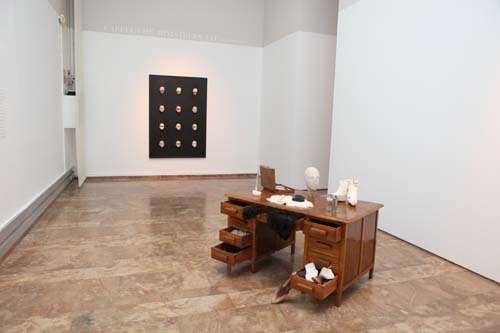 |
| |
|
Organised by Universitat de València and Capella de
Ministrers.
Produced by the General Foundation of Universitat de
València and Asociación Cultural Comes.
In cooperation with VALÈNCIA / CAMPUS, Bancaja and
València City Council
Curator: Beatriz Traver Badenes.
Participating artists: Flor Garduño, Isabel Muñoz and Eva Lootz.
After Capella de Ministrers’ 25-year career in the music
scene, this exhibition illustrates the global, universal
concept of the cycle of life using the four iconographic
periods that define the different stages in life, namely
genesis, metamorphosis, concupiscence and apocalypse.
These four art proposals by an impeccable selection of
artists from today’s art world make up a setting that
shows us that the concept of the cycle of life is
intrinsic to human beings, now and before.
In the exhibition, our senses are moved by the essential
meaning of life. Visitors are prompted to reflect about
the need for continuous growth. These have been
universal issues all along the centuries, and so they
will remain. In the show, contemporary art visually
develops human needs in metempsychosis with the music of
Capella de Ministrers. |
| |
|
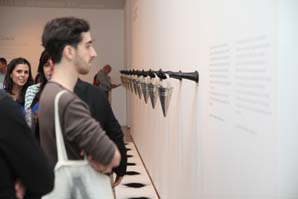 |
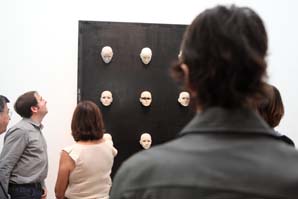 |
| |
|
CONCEPT
What is The cycle of life? The essence of each
individual substance but also the unity of everything,
that is, the totality of the universe as a macro-cosmos,
the beginning and the end, alpha and omega; the human
being conceived as the culmination of a process of
individualisation and globalisation, self-consciousness
in respect of matter, with which it can create,
interact, sublimate...
The primordial importance of life for human beings
affects our language, with uses and expressions that
include this concept. Together with the concept of
existence –inseparable from that of death- and its
transcendence, it has been and will be a universal
concern that leaves a print in the history of art, like
an intrinsically human expression.
We are living an internal struggle between ascetic
inclination and mortification which drives our
existence. From the moment we are born until we are
faced with this existential antinomy, we always shift
back and forth between either of these two conditions;
it is in this sense that humans become mediators between
elements and the emergence of what is new through an act
of creativity.
In order to stake the significant boundaries of such a
broad concept –The cycle of life- the exhibition
discourse is structured into the main phases in life,
namely: genesis, metamorphosis, concupiscence and
apocalypse, with the work of four leading artists from
today’s art scene, and using as a connecting thread a
music selection about the cycle of life, played by
Capella de Ministrers. Early music and contemporary art
merged together bring a meaning to these concerns of
human beings over the centuries.
EXHIBITION DISCOURSE
Arranged in a circular exhibition route, the work of the
four artists shows that the concerns of human beings as
creating entities are the same as those in ancient and
medieval history, connecting points of view and
offering, however, similar answers. The installations
are all supported by its own music played by Capella de
Ministrers, becoming the axis of the cycle of life.
Genesis
FLOR GARDUÑO (Mexico City, 1957), a disciple to Manuel
Álvarez Bravo and Katy Horna, completed her studies at
the Academia de San Carlos, where she focused on
the study of the structural aspects of shape and space.
She is considered to be an outstanding artist in today’s
Latin American photography scene. When she became a
mother, she decided to explore a more intimate, sensual
and playful universe in the area of female nude,
searching for the symbols of femininity as a way of
depicting women's archetypes in a fantastic and oneiric
world.
http://www.florgarduno.com/
Five photographs from her series Inner Light
illustrate her viewpoint about the genesis: the female
figure represents the starting point of the world, and
the music shows the origin of musical expression and the
first examples of polyphony. |
| |
|
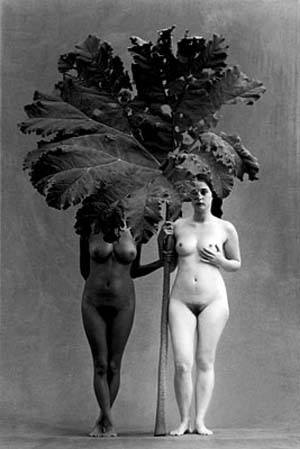 |
| |
|
METAMORPHOSIS
After completing studies in Advertising, CARMEN CALVO
(Valencia, 1950) furthered her education at the School
of Arts and Crafts and the Fine Arts College of
Valencia. In the mid 1970s the artist was fascinated by
archaeological pieces and so started a number of works
incorporating fragments.
Her works of art are generally considered to stand out
in today’s Valencian and Spanish art scene. Developed in
the period beginning in the 1970s, they gradually
created a strongly personal language marked by a
transformative nature. Interested in painting and
particularly its three-dimensional possibilities, the
artist organised a plastic universe in which she laid
the foundations of ongoing renewal, creating an
unequivocally experimental commitment that has caused
her to embody one of the most representative proposals
in contemporary Spanish art. |
| |
|
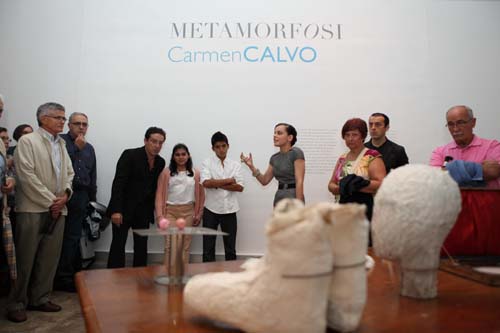 |
| |
|
Concupiscence
Photographer ISABEL MUÑOZ (Barcelona, 1951) says about
her work: “The body is like a book... It expresses
feelings, beauty...”. A scholar of the human body and
its shapes and movements, Isabel Muñoz tours love and
ecstasy in her photographic works from a particular
viewpoint on the body and mysticism, transcending and
portraying everyday life, turning its characters into
universal icons that represent a stage in life.
With a selection of five photographs about the series
Fragments, Isabel Muñoz shows her particular views
about concupiscence, a place where nudity abstraction
becomes sublimating. Her eroticism is defined by soft,
almost minimal lines which are paradoxically contrasted
by both the voluptuousness and absence of love of the
medieval minstrels featured in Ausiàs Marc’s poetry.
http://www.isabelmunoz.es |
| |
|
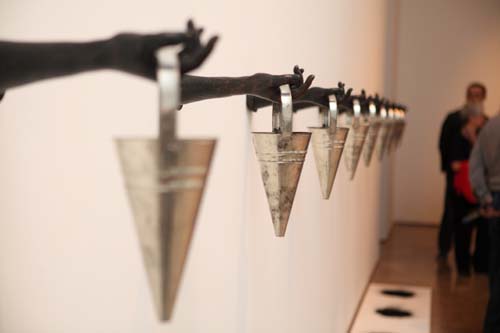 |
| |
|
Apocalypse
EVA LOOTZ (Vienna, 1940) studied fine arts, musicology,
cinema and philosophy and developed her career mostly in
Spain. She is well known for her sculptures but has also
worked with different art languages such as installation
art, drawing, print, photography, sound and video.
Her works are characterised by her concern with trying
to track down the connection between matter and language
from different viewpoints. Her reflection is broad and
exhaustive, attempting to go back to the origin of the
devaluation of matter versus ideas, which in most
cultures is parallel to the degradation of the value
given to women. It is in this respect that she questions
the inevitable futility and fleetingness of time.
Her work of art Trabajo infinito, with her
insistence on stopping time –which flies in an
inevitable way-, has been chosen to represent the
apocalypse. The incessant pace of time fleetingness is
handled by Capella de Ministrers with the complexity of
the other world, where prophetic Sybil reminds us that
nobody can escape fate, together with an epitaph of
sounds, far away unveiling the evident.
http://www.evalootz.com |
| |
|
CAPELLA DE MINISTRERS: 25 YEARS PRESERVING MUSIC
HERITAGE
Capella de Ministrers do not only give concerts; they
are also known for their music preservation activity and
their musicological research over the past 25 years,
following the boost given by Carles Magraner, the
director and founder, which illustrates their dual
commitment well: on the one hand, to rescue early music
as an essential and fundamental element of collective
memory, and on the other to bring it closer to the 21st
century, art and culture becoming genuine axes of
contemporary thought.
With 25 years worth of non-stop experience nationally
and internationally, Capella de Ministrers has
consolidated as a reference group in vocal and
instrumental music, specializing in the Spanish music
repertoire previous to the 19th century. The
result, transformed into a music testimony, combines
three key factors perfectly: historic rigour, music
sensitivity, and more particularly, an uncontainable
desire to communicate and involve us in these
experiences.
http://www.capelladeministrers.com |
| |
|
 |
| |
|
|
|